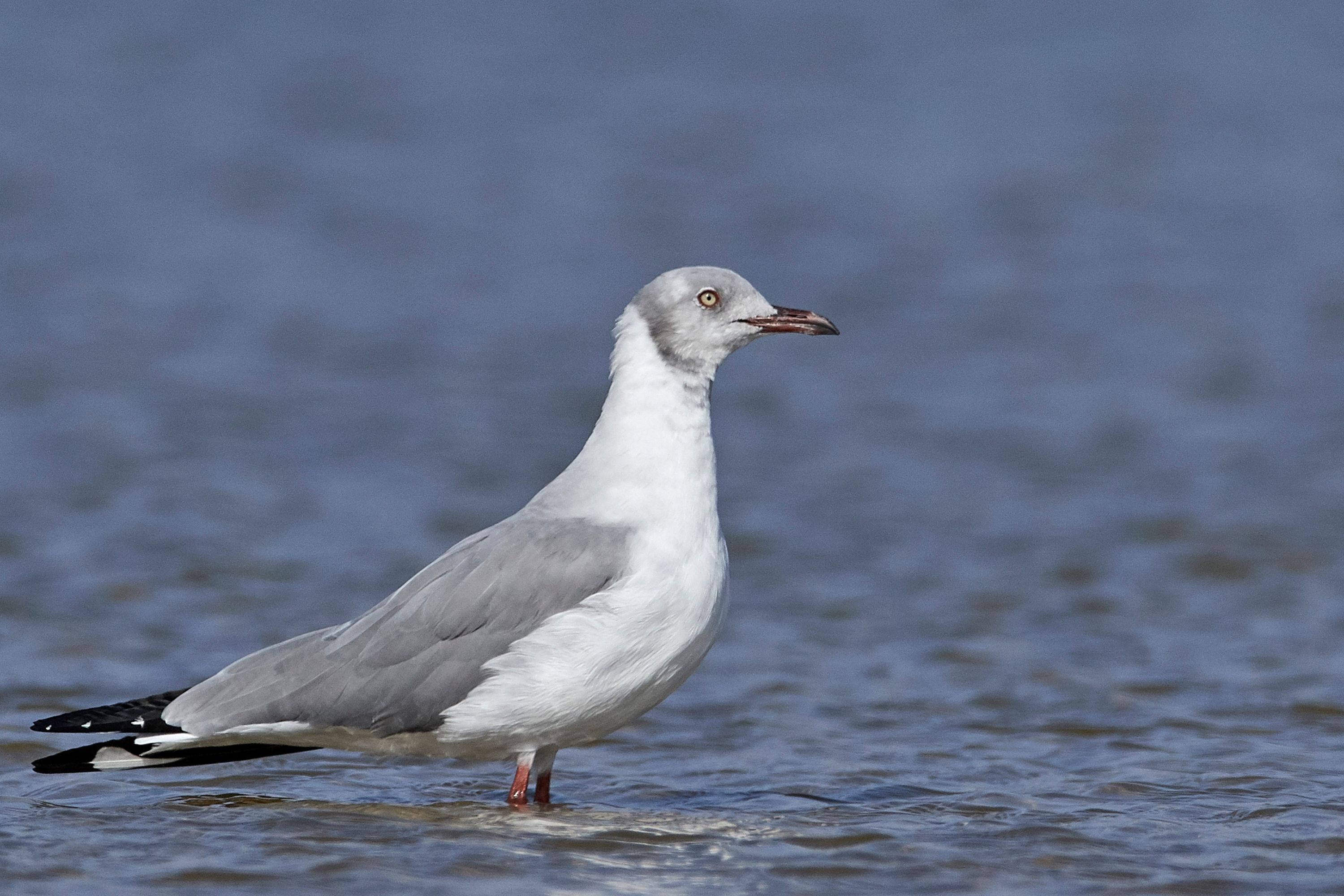Grey-headed gull
(Chroicocephalus cirrocephalus)

Description
The grey-headed gull (Chroicocephalus cirrocephalus), also known as the grey-hooded gull, is a small gull which breeds patchily in South America and Africa south of the Sahara. It is not truly migratory, but is more widespread in winter. This species has occurred as a rare vagrant to North America, Italy and Spain. As is the case with many gulls, it has traditionally been placed in the genus Larus. This locally abundant gull breeds in large colonies in reedbeds and marshes, and lays two or three eggs in a nest, which can be on the ground or floating. Like most gulls, it is highly gregarious in winter, both when feeding and in evening roosts. Although it is predominantly coastal or estuarine, it is not a pelagic species, and is rarely seen at sea far from land. Flocks numbering hundreds or thousands of these gulls can form when the feeding conditions are appropriate. The grey-headed gull is slightly larger than the black-headed gull at 42 cm length. The summer adult has a pale grey head, a grey body, darker in tone than the black-headed, and red bill and legs. The black tips to the primary wing feathers have conspicuous white "mirrors". The underwing is dark grey with black wingtips. The grey hood is lost in winter, leaving just dark streaks. Chroicocephalus is a genus of medium to relatively small gulls which were included in the genus Larus until recently. Some authorities also include the Saunders's gull in Chroicocephalus. The genus name Chroicocephalus is from Ancient Greek khroizo, "to colour", and kephale, "head". Representatives of this genus are found in regions/subregions all over the world, each species usually being confined to a region..
Taxonomic tree:







